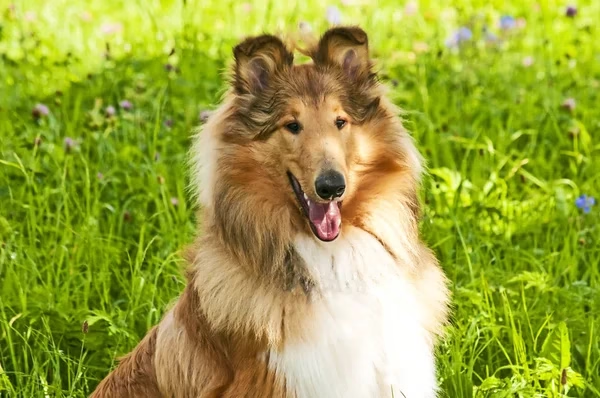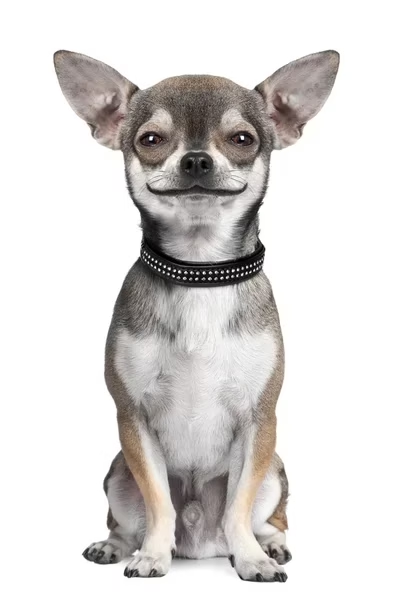Introduction
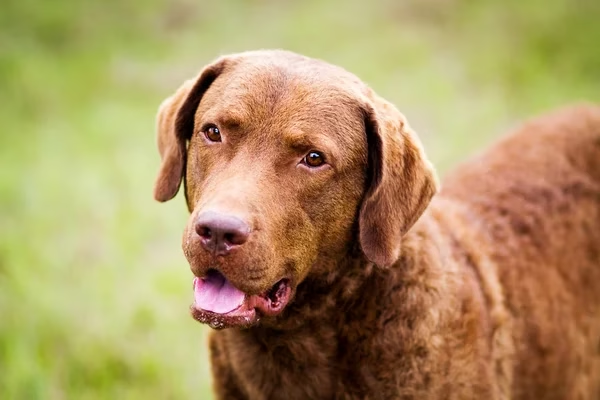
The Chesapeake Bay Retriever, or “Chessie” for short, is America’s water dog. Known for its strength, intelligence, and devotion, this breed is an excellent choice for active families or hunters. But while their heart is as big as their body, they do require commitment and the right environment to thrive.
Chesapeake Bay Retriever Breed Overview
| Trait | Details |
|---|---|
| Breed Name | Chesapeake Bay Retriever |
| Origin | United States (Maryland) |
| Size | Medium to Large |
| Weight | 55–80 pounds (25–36 kg) |
| Lifespan | 10–13 years |
| Temperament | Loyal, Protective, Intelligent |
| Coat | Dense, oily double coat |
| Colors | Brown, sedge, deadgrass |
| Activity Level | High |
| Good with Kids | Yes, with socialization |
| Trainability | High (needs firm consistency) |
History of the Chesapeake Bay Retriever
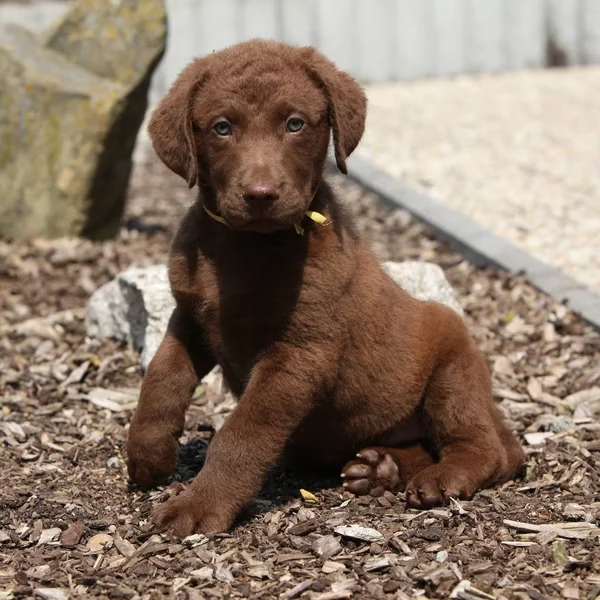
This breed originated in the 1800s on Maryland’s Chesapeake Bay. Developed to retrieve waterfowl in icy waters, the Chesapeake Bay Retriever descended from two rescued Newfoundland puppies. These dogs were then crossed with local retrievers, resulting in a tough, weather-resistant hunting companion.
They were officially recognized by the AKC in 1878 and remain a beloved American breed.
Appearance and Coat
Chessies have a muscular build and a powerful frame designed for endurance. Their most notable feature is their thick, wavy double coat, which is oily to the touch. This coat repels water and insulates them from cold. Eye color is typically amber or yellow, giving them a striking gaze.
Coat colors blend into marshland—perfect for hunting camouflage.
Temperament
These dogs are famously loyal, often bonding closely with one person or family. They’re protective, sometimes even territorial, but rarely aggressive when trained correctly. Smart and independent, Chessies need mental and physical challenges to stay happy.
Unlike some retrievers, they may not always be eager to greet strangers, but they’re loving and gentle with their people.
Is a Chesapeake Bay Retriever a Good Family Dog?
Yes, but they’re not for everyone. With proper training and early socialization, Chesapeake Bay Retrievers can be fantastic family dogs. They’re excellent with respectful children and do well in homes that provide structure and daily stimulation.
However, they may not be the best fit for novice dog owners or passive households. Their independence requires confident handling.
Are Chesapeake Bay Retrievers High Maintenance?
In terms of grooming, their water-repellent coat is relatively easy to manage. Yet their exercise and mental stimulation needs are high. These dogs thrive with purpose — be it hunting, hiking, or dog sports. If bored, they may become stubborn or destructive.
So yes, they are moderate-to-high maintenance in terms of time and energy, but not grooming.
Do Chesapeake Bay Retrievers Bark a Lot?
Generally, they are not excessive barkers. However, they are alert and can be vocal when someone approaches the home. Early training can help control unwanted barking behaviors. They often bark for a reason — boredom, alerting, or protecting.
How Much Does a Chesapeake Bay Retriever Cost?
Buying a Chesapeake Bay Retriever from a reputable breeder typically costs $800–$2,500 USD, depending on pedigree, health tests, and location. Rescue organizations may offer adoption options for less. Don’t forget ongoing costs such as:
- Quality dog food
- Routine vet care
- Training classes
- Toys and gear
- Grooming supplies
Training Tips
Start early. Socialize your puppy with new people, pets, and environments. Use positive reinforcement, as Chessies respond well to structure and respect. Their intelligence makes them quick learners, but their independence means they may challenge you.
Keep sessions short, engaging, and consistent. Boredom leads to stubbornness.
Exercise Needs of the Chesapeake Bay Retriever
These dogs need at least 60–90 minutes of daily activity. Long walks, swimming sessions, fetch, or agility courses are perfect. They particularly enjoy retrieving in water, true to their origin.
Without sufficient exercise, they may develop behavioral problems or gain excess weight.
Health and Lifespan
Chessies are generally healthy but may be prone to:
- Hip or elbow dysplasia
- Progressive Retinal Atrophy (PRA)
- Degenerative myelopathy
- Bloat (gastric torsion)
- Skin allergies
Lifespan is typically 10–13 years. Choose a breeder who screens for these issues and keep up with regular vet checkups.
Grooming the Chesapeake Bay Retriever
Their double coat needs brushing 1–2 times per week. During shedding seasons (spring and fall), more frequent brushing helps control hair. Avoid over-bathing — it removes the natural oils that protect their coat.
Don’t forget regular nail trimming, ear cleaning, and dental care.
Pros and Cons of the Chesapeake Bay Retriever
| Pros | Cons |
|---|---|
| Excellent swimmer and retriever | Needs significant exercise |
| Loyal and protective | Can be reserved or territorial |
| Intelligent and quick learner | Not ideal for first-time dog owners |
| Low grooming needs | Can be stubborn without proper training |
Fun Facts About Chesapeake Bay Retrievers
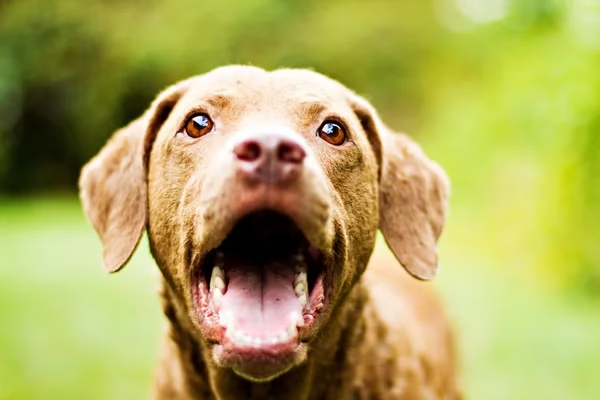
- The official dog of Maryland
- Chessies have webbed feet for swimming
- Bred to retrieve up to 200 ducks a day
- Their coat sheds dirt and dries quickly
- One of the few American-bred retrievers
Final Thoughts on the Chesapeake Bay Retriever
The Chesapeake Bay Retriever is a loyal, driven, and protective breed. Perfect for active owners who love the outdoors, Chessies are happiest when given a job and structure. With time, effort, and love, they can be one of the most rewarding companions you’ll ever know.
Internal Link
Explore other loyal and active dogs like the Labrador Retriever.
External Link
For official breed standards, visit the AKC Chesapeake Bay Retriever page.


